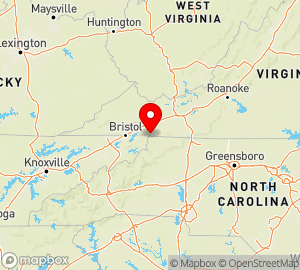Tennessee
Tennessee State Information

www.tennessee.gov
Area (sq mi):: 42143.27 (land 41217.12; water 926.15) Population per square mile: 144.70
Population 2005: 5,962,959 State rank: 0 Population change: 2000-20005 4.80%; 1990-2000 16.70% Population 2000: 5,689,283 (White 79.20%; Black or African American 16.40%; Hispanic or Latino 2.20%; Asian 1.00%; Other 2.40%). Foreign born: 2.80%. Median age: 35.90
Income 2000: per capita $19,393; median household $36,360; Population below poverty level: 13.50% Personal per capita income (2000-2003): $26,097-$28,641
Unemployment (2004): 5.50% Unemployment change (from 2000): 1.50% Median travel time to work: 24.50 minutes Working outside county of residence: 26.60%
List of Tennessee counties:
Tennessee Parks
- US National Parks
- Urban Parks
- State Parks
- Parks and Conservation-Related Organizations - US
- National Wildlife Refuges
- National Scenic Byways
- National Heritage Areas
- National Forests
Tennessee
Sixteenth state; admitted on June 1, 1796 (seceded on June 8, 1861, and was readmitted on July 24, 1866)
In 1929, the state legislature designated June 1 as Statehood Day in Tennessee.
State capital: Nashville Nicknames: The Volunteer State; The Big Bend State; The
Mother of Southwestern Statesmen State motto: Agriculture and Commerce State agricultural insect: Honeybee (Apis mellifera) State amphibian: Tennessee cave salamander (Gyrinophilu
palleucus) State animal: Raccoon (Procyon lotor) State aviation hall of fame: Tennessee Aviation Hall of
Fame State bird: Mockingbird (Mimus polyglottos) State butterfly: Zebra swallowtail (Eurytides marcellus) State commercial fish: Channel catfish (Ictalurus lacustris);
game fish: Largemouth bass (Micropterus salmoides) State declamation: “I am Tennessee” State flower: cultivated: Purple iris (Genus Iridaceae); wild:
Passion flower (Passiflora incarnata) State folk dance: Square dance State fossil: Pterotrigonia (Scabrotrigonia) thoracica State fruit: Tomato (Lycopersicon lycopersicum) State game bird: Bobwhite quail (Colinus virginianus) State gem: Tennessee pearl State horse: Tennessee Walking Horse State insects: Ladybug (Hippodamia convergens); firefly
(Photinus pyralls) State jamboree and crafts festival: Smithville Fiddlers’Jamboree and Crafts Festival
State paintings: Tennessee Treasures; Tennessee Treasures Too State poem: “Oh Tennessee, My Tennessee” State reptile: Eastern box turtle (Terrapene carolina) State rocks: Limestone; agate State slogan: Tennessee—America at Its Best
State songs: “When It’s Iris Time in Tennessee”; “Tennessee Waltz”; “My Homeland, Tennessee”; “My Tennessee”; “Rocky Top”; “Tennessee”; “The Pride of Tennessee”
State tree: Tulip poplar (Liriodendron tulipifera) State wild animal: Raccoon (Procyon lotor)
More about state symbols at:
tennessee.gov/sos/symbols/
More about the state at:
www.state.tn.us/sos/bluebook/
SOURCES:
AmerBkDays-2000, p. 413 AnnivHol-2000, p. 94 DictDays-1988, p. 113
STATE OFFICES:
State web site: www.tennessee.gov
Office of the Governor State Capitol 1st Fl Nashville, TN 37243 615-741-2001 fax: 615-532-9711 www.tennessee.gov/governor
Secretary of State State Capitol 1st Fl Nashville, TN 37243 615-741-2819 fax: 615-532-9547 www.state.tn.us/sos
Tennessee State Library & Archives 403 7th Ave N Nashville , TN 37243 615-741-2764 fax: 615-741-6471 state.tn.us/tsla
Legal Holidays:
| Good Friday | Apr 22, 2011; Apr 6, 2012; Mar 29, 2013; Apr 18, 2014; Apr 3, 2015; Mar 25, 2016; Apr 14, 2017; Mar 30, 2018; Apr 19, 2019; Apr 10, 2020; Apr 2, 2021; Apr 15, 2022; Apr 7, 2023 |
Tennessee
a state in the southern USA. Area, 109,400 sq km. Population, 4.1 million (1974; 58.8 percent urban). The capital is Nashville. Other important cities are Memphis, Knoxville, and Chattanooga.
The eastern part of the state is occupied by the Appalachian Mountains, and the western part by the Mississippi Alluvial Plain. The climate is subtropical continental, with average January temperatures of 3.5°–5°C and average July temperatures of 25°C. Annual precipitation is 1,100–1,200 mm. The main rivers are the Tennessee and the Cumberland. The soils are mainly of the brown forest type. Deciduous trees, such as oak, hickory, and tulip tree, grow on the mountain slopes. The Great Smoky Mountains National Park is located in Tennessee.
Tennessee is an industrial-agrarian state. The Tennessee River valley has a complex of hydroelectric, thermal, and nuclear power plants, with a rated power of 13 gigawatts (GW; 1974); the hydroelectric power plants have a capacity of 2 GW. Among the leading industries are the chemical industry, which produces fertilizers and synthetic fibers, the nuclear-related industries at Oak Ridge, and nonferrous metallurgy, represented by the smelting of aluminum in Alcoa. Other industries include machine building, represented by the manufacture of electrical equipment, agricultural equipment, and motor vehicles, as well as woodworking, textiles, food processing, and printing. Manufacturing employs 522,000 persons (1973); 7,000 are engaged in the mining of coal, phosphorites, and zinc and the quarrying of marble.
In agriculture, two-thirds of the commodity production is provided by stock raising; the livestock population numbers 2.7 million head of cattle and 900,000 hogs (1972). Tennessee’s main crops are tobacco and soybeans. Other crops include corn, wheat, cotton, and forage grasses. There is shipping on the Mississippi and Tennessee rivers.
IU. A. KOLOSOVA
Tennessee
a river in the eastern USA; a left tributary of the Ohio River (Mississippi River basin) and the Ohio’s largest tributary.
The Tennessee River is formed by the confluence near Knoxville of the Holston and French Broad rivers, which flow down the western slopes of the Appalachian Mountains. Its length from the confluence is 1,050 km (from the source of the Holston, 1,470 km). The Tennessee drains an area of 104,000 sq km. High water occurs in late winter and in spring, and low water in summer. The mean flow rate at the mouth is 1,800 cu m per sec.
The flow of the Tennessee is almost completely regulated by a system of multipurpose reservoirs. Nine of the reservoirs —including the Kentucky Reservoir, the largest at 1,100 sq km—are on the Tennessee itself, and 22 are on the river’s tributaries. A system of bypass canals (near the rapids at Chattanooga, Tenn., and Florence, Ala.) and locks makes the Tennessee navigable for its entire length, from the confluence of the Holston and French Broad rivers. The total generating capacity of the hydroelectric power plants in the Tennessee River basin is approximately 4 gigawatts. The cities of Knoxville and Chattanooga, Tenn., and Florence, Ala., are on the Tennessee River.